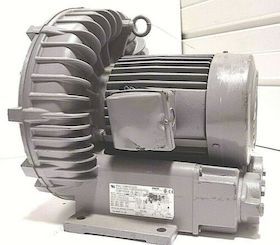
-----
Tank Design layout for chrome plating with push-pull hood
Q. We are installing a tank of size 2350 dia. * 4000 mmL for hard chrome plating, with push-pull ventilation system, each hood covers 1/3 of circumference of tank.Push hood will be 50mm in height, pull hood will be 450mm in height, both hoods located on the tank top circumferential surface and facing each other, leaving 1/6th of circumference in between.2 numbers independent rectifiers of 8000 amperes capacity will carry out plating independently on 2 different medium size jobs, in case of bigger jobs both rectifiers will be coupled.2 sets Lighter jobs will be directly bolted to 25mm*100mm cross-section Copper bus bar, with bus bar resting on a strong mechanical structure of I-Beams, channels, located outside the tank and parallel to direction of flow of air from the hoods.Heavier jobs will be supported on I-Beams, resting on mechanical structure, and both rectifiers coupled.Due to only 1/6th of circumference between hoods we are forced to position bus bars and I-Beams above push hood.Will this disturb the air flow leading to more chrome vapours escaping to atmosphere?What do you recommend?
Shaunak Shah- India
1998
A. You have just stated good reasons to not use round tanks. The waste space and you end up with drips on the floor that you do not get with rectangular.
Since it is what you have, I would recommend the use of 1/8" PVC shields on the portions of the tank other than the push air area. These can be of any suitable height or several heights. They make an extraordinary difference in the capture capability of the hood.
I have seen vinyl used also and vinyl used as hinges on the PVC to fold it down or back to get a part by.
A little trial and error will give you a cheap improvement.
James Watts- Navarre, Florida
A. Your pull hoods don't sound quite tall enough. They should be 25 percent of the control width, i.e., 587.5 mm if I understood your question. Further, it seems like the pull hood should cover 1/2 of the circumference. In my experience, the 'push hood' should be called a 'push pipe' because the high pressure / low volume push systems that are comprised of a pipe with drilled holes work better than the low pressure / high volume types built with a push hood. The latter seem to entrain too much volume, more than the pull hood can absorb. I can't say that the obstructions you describe will not be a problem; but in the picture your description conjurs up in my mind's eye it sounds okay.

Ted Mooney, P.E.
Striving to live Aloha
finishing.com - Pine Beach, New Jersey
Ted can be retained for immediate
answers or long term project help
Q. We thank you for your response on our Round Tank Problems.
We are having a bottom pulling/pushing system from the pull/push hood to the blowers. Ours being a small industrial shed there is no cross flow of air in the vicinity of the hoods. Hence there is no draft of air perpendicular or parallel to air flow direction above the hood. In this condition do we still require the pull hood height above the tank as 25% of control width. Also due to restrictions in the vertical directions can we restrict the height to 15 to 20%. Considering that the push air is given and the tank is circular so that not all portions of the tank are a distance equal to the control width from the pull hood. Also there is a 12" wall/baffle above the liquid level all around before the hood starts.
As pointed out above there is 12" wall/baffle above the liquid level all around the tank. Even then do we require a high pressure/low volume push pipe or will a sloated push hood work just as well. What is the pressure drop that one should assume in push arrangement across the push equipment in case of push pipe with holes will this result in a substantial saving of motor Horse Power for push blower.
Thanking you
Yours faithfully
Shaunak Shah [returning]Sonak Industries - India
A. Sir,
Properly done, your (pull) hood would bend to conform to the tank rim and would ideally be 1/2 the circumference of the tank. 1/3 would be acceptable with shields, but 1/4 will not give good results.
Your push air should be oil less such as from a regenerative blower and be about 15 psi. The header would be 1 1/2" to 2" with 5/32 holes every 2 inches. This should conform to the rim of the tank by either heating the pipe in very hot water and bending or by using a series of 30 or 45 degree elbows. I would make the push air the same length as the pull hood and set exactly opposite from it.
Too high a pressure will cause some problems. Proper push air will reduce the amount of "pull" air required by about 20%. Chrome should have about 250 cfm per sq ft of liquid area. By filling in some of the space that is unuseable in a round tank with a cover, you can reduce the effective area of the liquid to that of the opening.
A small lip or overhang from the top of the hood will force more of the air to come from the "sides" of the tank and less from the top down, thus giving a better capture of the fumes.
James Watts- Navarre, Florida
Q, A, or Comment on THIS thread -or- Start a NEW Thread
